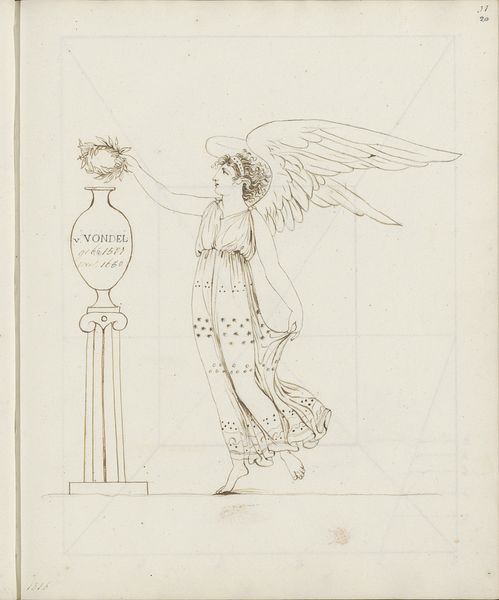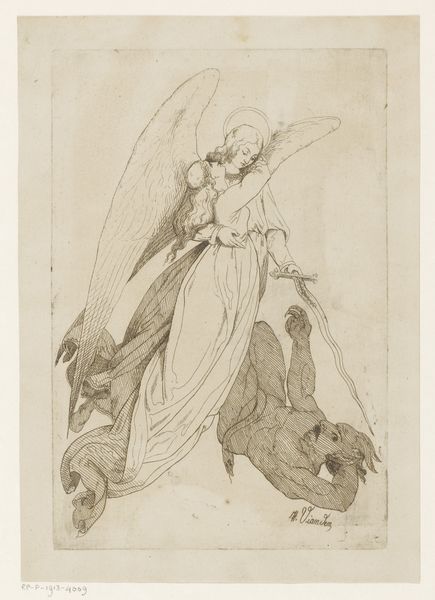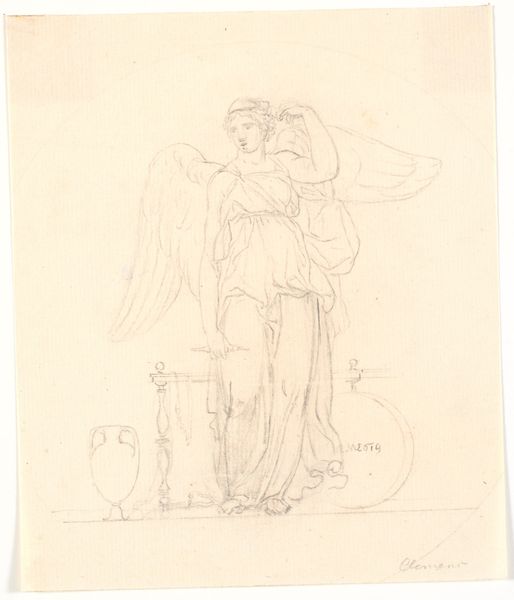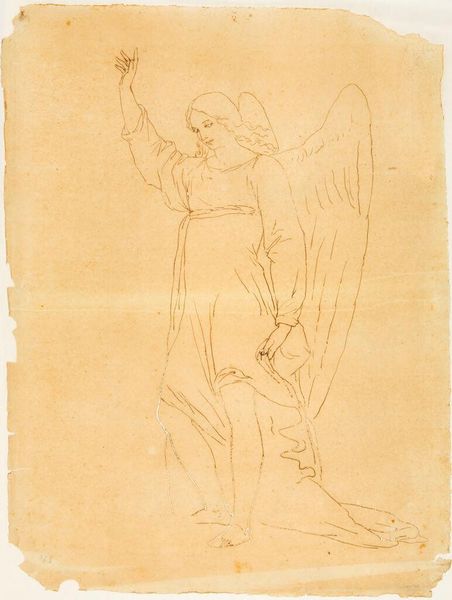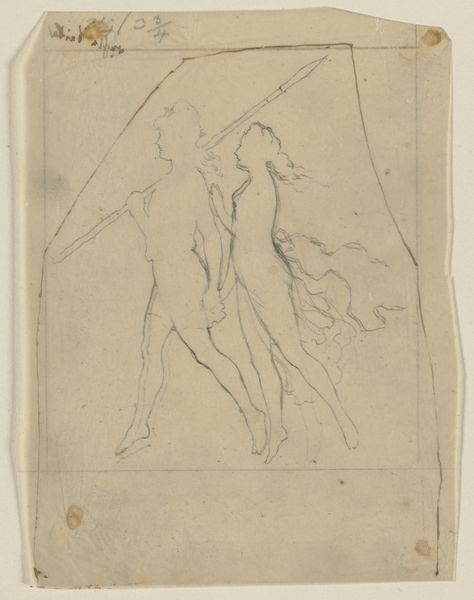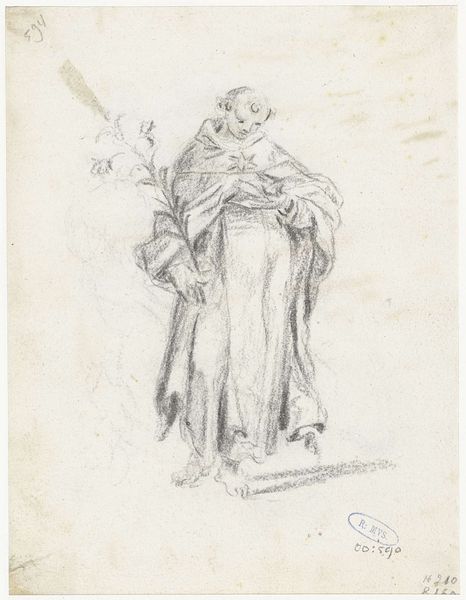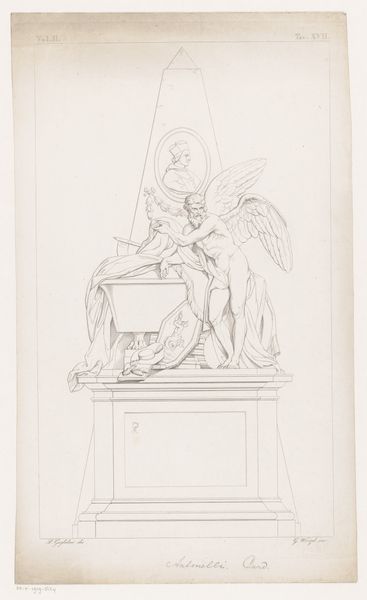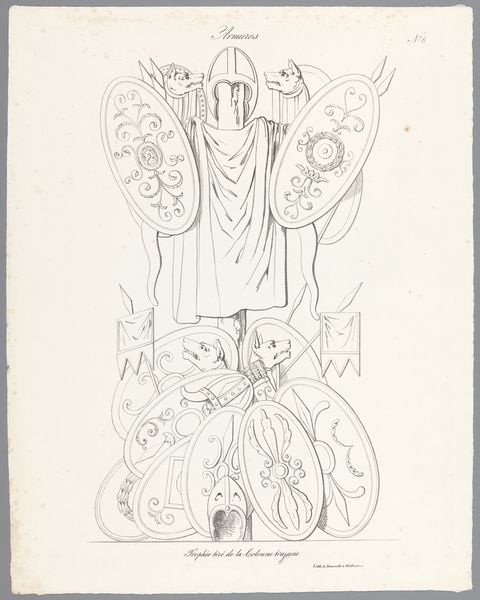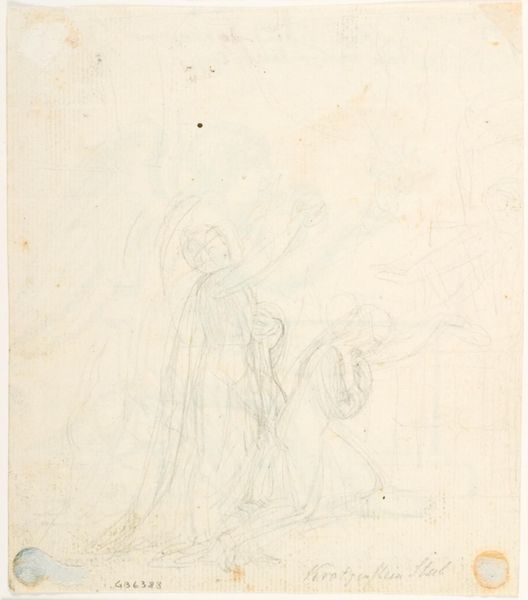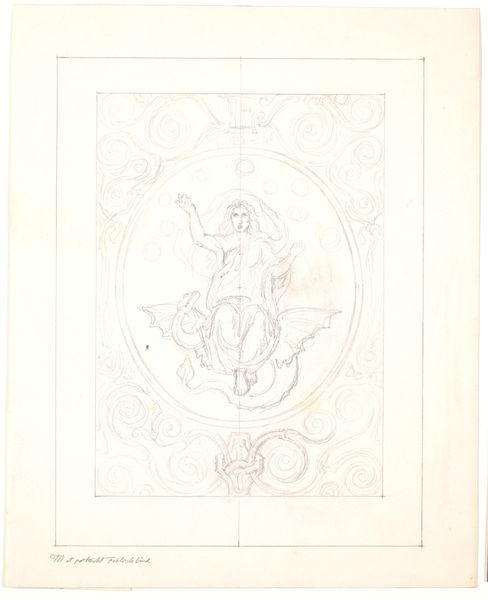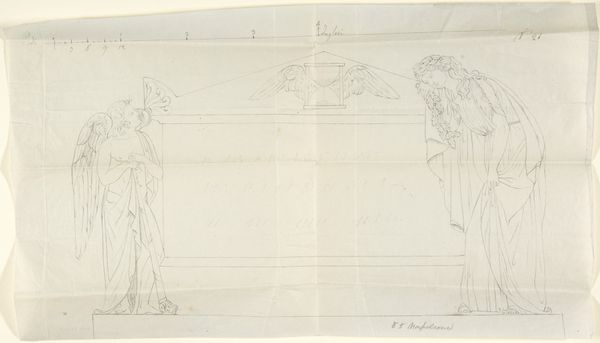
drawing, paper, ink
#
portrait
#
drawing
#
imaginative character sketch
#
quirky sketch
#
allegory
#
figuration
#
paper
#
personal sketchbook
#
ink
#
idea generation sketch
#
sketchwork
#
ink drawing experimentation
#
romanticism
#
line
#
sketchbook drawing
#
storyboard and sketchbook work
#
sketchbook art
#
initial sketch
Dimensions: height 407 mm, width 283 mm, height 206 mm, width 182 mm
Copyright: Rijks Museum: Open Domain
Editor: Here we have David-Pierre Giottino Humbert de Superville's ink and paper drawing, "Engel in gebed", made sometime between 1780 and 1849. I'm struck by how preliminary and ethereal it feels, like a fleeting idea. What can you tell me about it? Curator: It’s interesting that you pick up on that feeling of ethereality. Considering the time period, nestled between the Enlightenment and the rise of full-blown Romanticism, this piece feels indicative of a society grappling with changing ideas about faith and reason. How does the depiction of the angel diverge from, say, earlier Renaissance depictions of similar subjects? Editor: Well, it's not as idealized or classically rendered. There’s a certain vulnerability in the sketchiness. It doesn’t feel like a celebration of divine power, more like… a contemplation? Curator: Exactly! And that's key. Romanticism valued individual experience and emotion. Do you notice any specific visual cues, perhaps in the institutional context of the art world at this time, which may lead to this feeling of personal feeling, emotion and perhaps uncertainty? Editor: The visible grid lines and numbers imply this was maybe a study for something larger. Like a… personal exploration before a final artwork? Also, maybe intended for a specific patron or audience, as it includes notes written at the bottom. Curator: Precisely! Consider the rise of academies and structured artistic training. While fostering skill, it also inadvertently created space for more personal explorations outside those established boundaries. This piece straddles the line. It’s both an angel – a figure with established visual language – yet rendered in a uniquely intimate manner. What did you learn through this analysis? Editor: I now realize this work tells us something not just about angels, but also about art’s place within 18th and 19th century society. Thanks! Curator: My pleasure! It's about thinking how this artwork, despite being a simple "sketch" actually stands in conversation with both its traditions, while still critiquing norms in its own way.
Comments
No comments
Be the first to comment and join the conversation on the ultimate creative platform.
